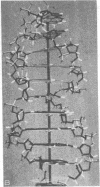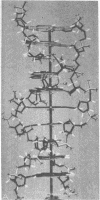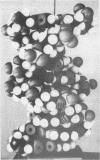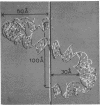Abstract
We have constructed a space-filling (Corey-Pauling-Koltun) model of an alternative structure for DNA. This structure is not a double helix, but consists of a pair of polynucleotide strands lying side by side and held together by Watson-Crick base pairing. Each of the two strands has alternating right- and left-handed helical segments approximately five base pairs in length. Sugar residues in alternating segments along a strand point in opposite directions. A structure slightly different from the present one proposed earlier by ourselves and another group and in which sugars in a strand all point in the same direction is ruled out. The present structure yields natural solutions to the problems of supercoiling of DNA and of strand separation during DNA replication. This model is energetically more favorable than the double helix.
Full text
PDF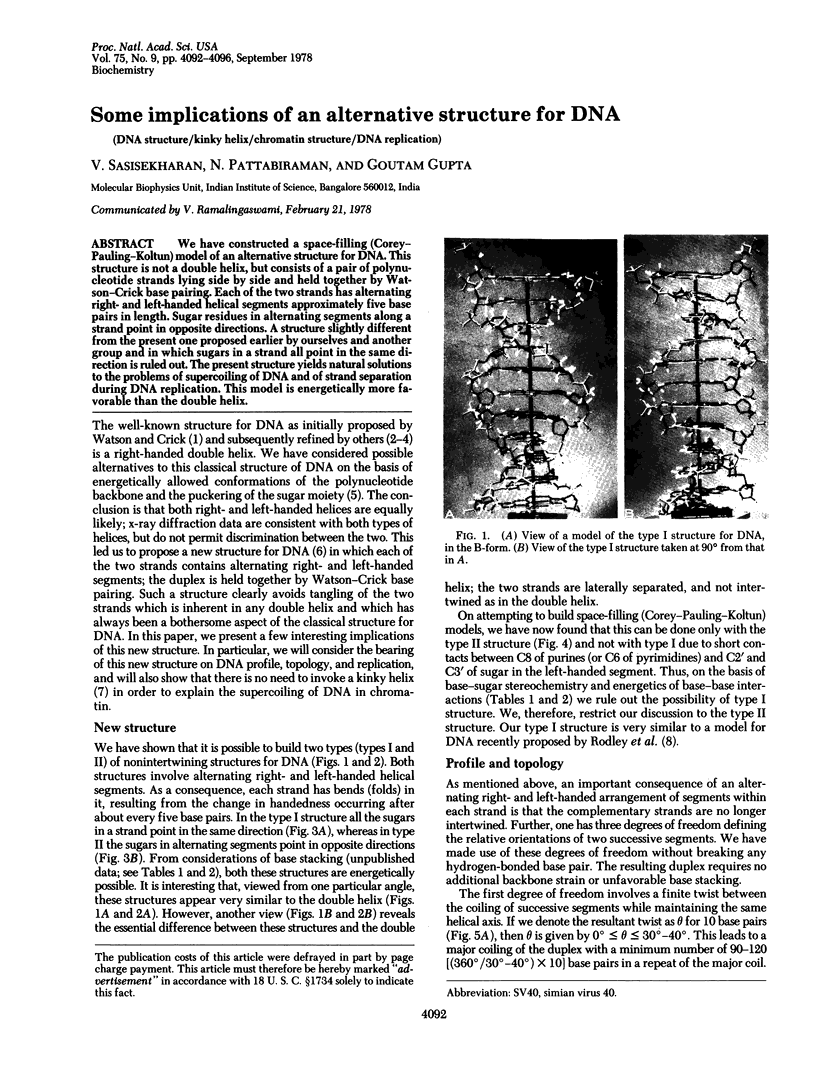
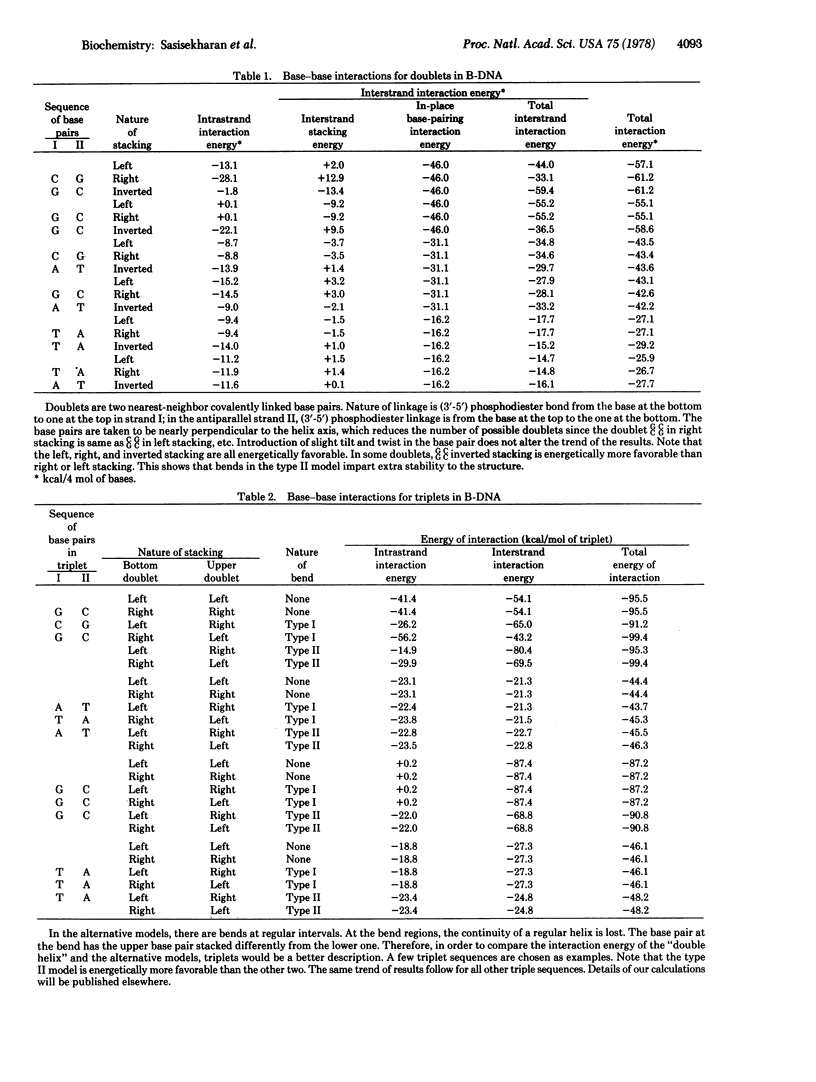
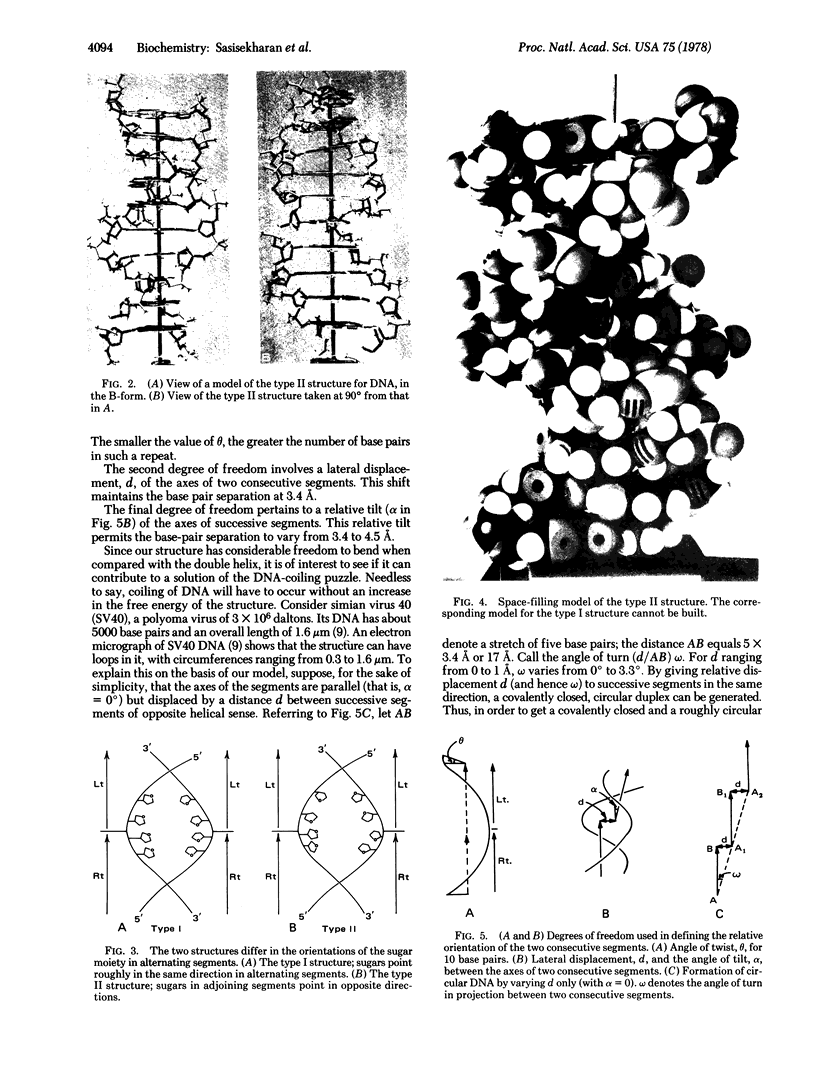
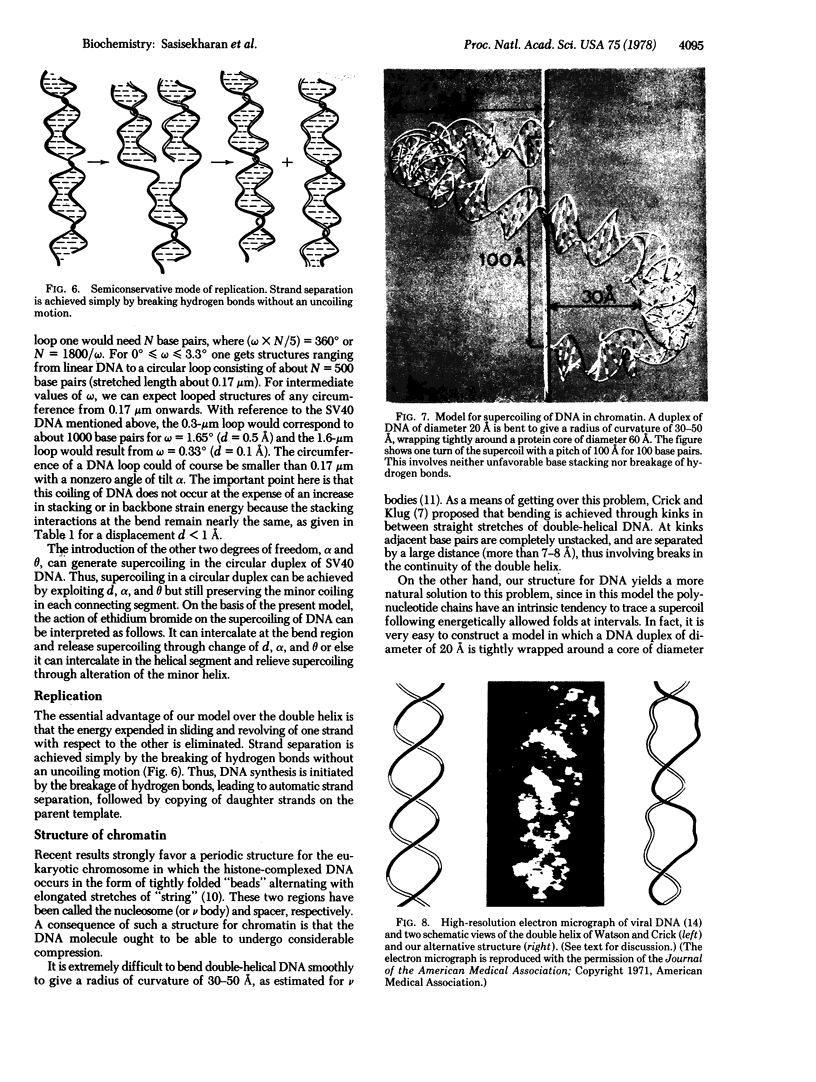
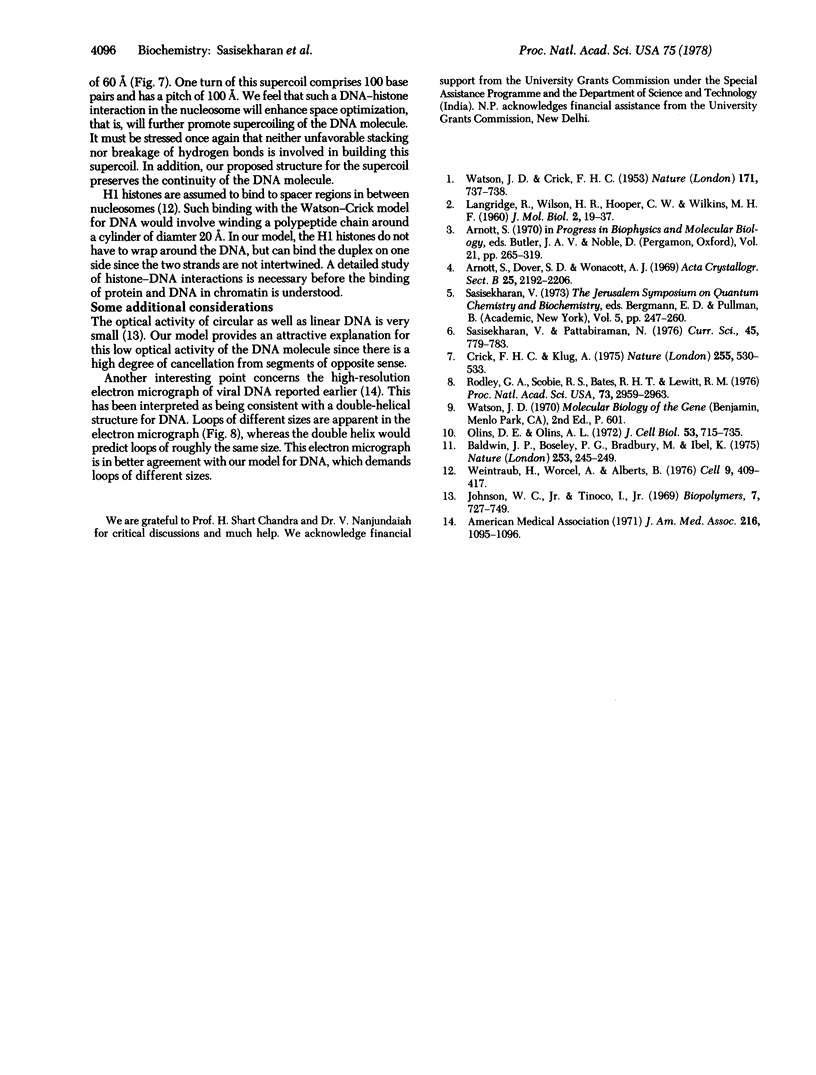
Images in this article
Selected References
These references are in PubMed. This may not be the complete list of references from this article.
- Baldwin J. P., Boseley P. G., Bradbury E. M., Ibel K. The subunit structure of the eukaryotic chromosome. Nature. 1975 Jan 24;253(5489):245–249. doi: 10.1038/253245a0. [DOI] [PubMed] [Google Scholar]
- Crick F. H., Klug A. Kinky helix. Nature. 1975 Jun 12;255(5509):530–533. doi: 10.1038/255530a0. [DOI] [PubMed] [Google Scholar]
- Olins D. E., Olins A. L. Physical studies of isolated eucaryotic nuclei. J Cell Biol. 1972 Jun;53(3):715–736. doi: 10.1083/jcb.53.3.715. [DOI] [PMC free article] [PubMed] [Google Scholar]
- Rodley G. A., Scobie R. S., Bates R. H., Lewitt R. M. A possible conformation for double-stranded polynucleotides. Proc Natl Acad Sci U S A. 1976 Sep;73(9):2959–2963. doi: 10.1073/pnas.73.9.2959. [DOI] [PMC free article] [PubMed] [Google Scholar]
- WATSON J. D., CRICK F. H. Molecular structure of nucleic acids; a structure for deoxyribose nucleic acid. Nature. 1953 Apr 25;171(4356):737–738. doi: 10.1038/171737a0. [DOI] [PubMed] [Google Scholar]
- Weintraub H., Worcel A., Alberts B. A model for chromatin based upon two symmetrically paired half-nucleosomes. Cell. 1976 Nov;9(3):409–417. doi: 10.1016/0092-8674(76)90085-4. [DOI] [PubMed] [Google Scholar]




